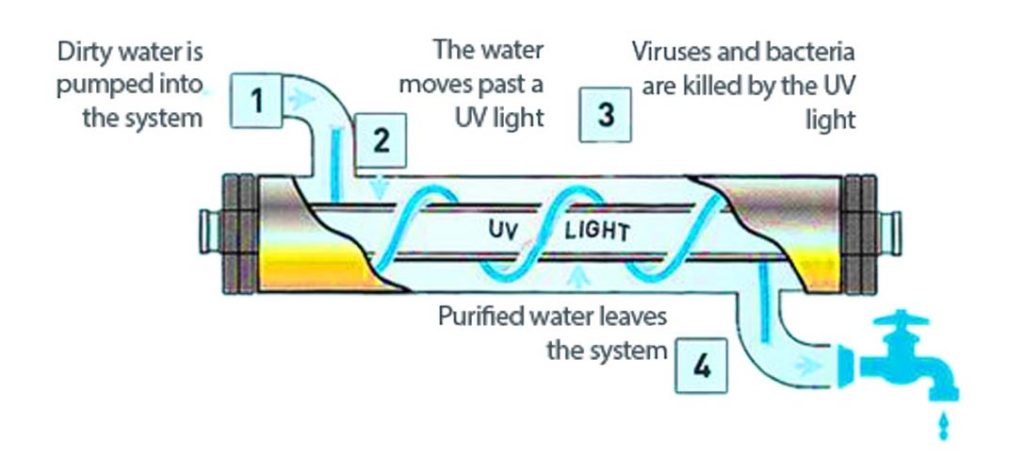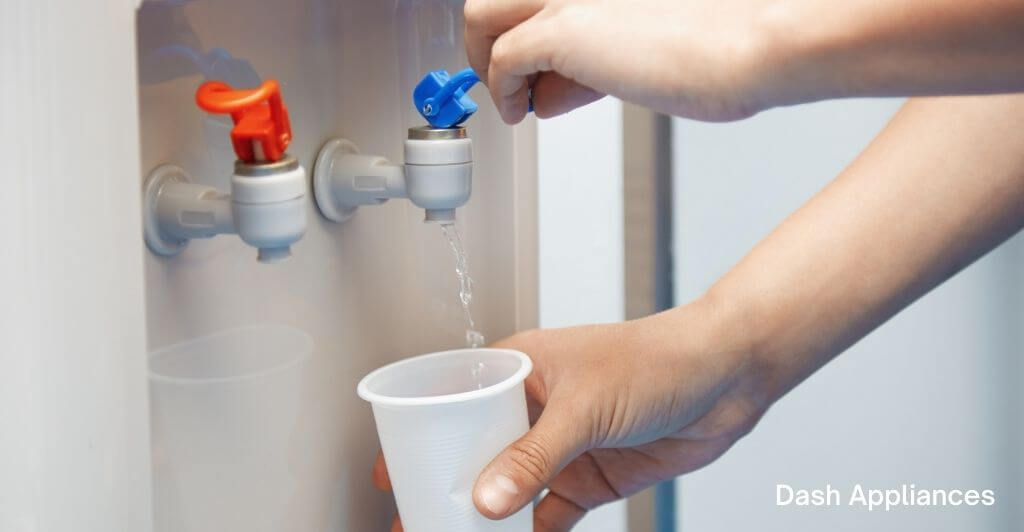Does the thought ever strike your mind that how do water purifiers with the latest technologies work and provide you with clean and fresh water?
The UV purifiers are quite hot in the market because of the technology they used to clean our drinking water. The UV water purifiers treat unsafe water with the use of germicidal UV light.
In this guide, we’re going to tell you all about these purifiers, their advantages, disadvantages, and more.
What Is a UV Water Purifier?
Ultraviolet water purifiers make use of germicidal UV light to get rid of germs and harmful components present in your water.
The DNA of these living organisms gets scrambled by the ultraviolet light, and hence, the water gets cleaned.

Consumption of unclean water can harm your digestive tract, and the UV purifiers ensure this doesn’t happen by eliminating fungi, parasites, viruses, and bacteria, among other harmful germs.
How Does a UV Purifier Function?
UV water purifiers expose harmful components to germicidal UV wavelength, which further destroys the DNA of these organisms and makes it impossible for them to reproduce.
At a wavelength of 254-nm, the UV radiation can hamper the DNA present on pathogenic microorganisms. The UV light doesn’t allow bacteria to infect our water with diseases.

The measurement of energy in terms of a UV purifier is UV dosage. With an increase of dosage provided, the ability of the UV purifier to treat more water gets increased. When enough, a UV purifier can get rid of almost all the microorganisms that can be found in water.
Are Ultraviolet Water Purifiers Efficient & Effective?
Ultraviolet water purifiers prove to be highly effective as they disinfect the water very quickly. UV purifiers can get rid of 99.9% of organisms in your water, and they are developed so that they work efficiently to ensure that you always get safe water.
UV purifiers clean your drinking water effectively and efficiently. UV disinfection can get rid of up to 99.99% of organisms present in drinking water.
As these purifiers are not filters, they don’t leave any debris or waste behind, and hence, each drop of water that goes inside these purifiers gets purified. These purifiers are developed in such a way that they run 24/7 to ensure that you always consume fresh and clean water.
What Gets Removed by a UV Purifier?
UV purifiers deactivate living organisms. However, ultraviolet purifiers are incapable of getting rid of chemicals, harmful particles, bad odors, and tastes that your water may have.
UV water filters remove:
- Algae
- Few viruses
- Cholera
- Fungi
- E. coli
- Cryptosporidium
- Streptococcus
- Hepatitis B
- Giardia
- Mycobacterium tuberculosis
- Salmonella
- Dysentery bacilli
UV Purifier Advantages & Disadvantages
Here are a few advantages and disadvantages of UV water filters…
| Advantages | Disadvantages |
| Doesn’t use chemicals to disinfect living organisms in the water | Doesn’t get rid of contaminants |
| Doesn’t leave any byproducts in the water | Requires electricity to function |
| Doesn’t change the odor or taste of your water | Heats the water as it uses UV rays to kill living organisms |
| It doesn’t waste water | |
| Low maintenance cost | |
| Easy to handle |
UV Purifier Maintenance
The best thing about investing in UV purifiers is that they don’t require much maintenance and work efficiently for many years. However, you need to maintain them now and then to ensure that they clean your water properly.
It would be best if you replace the lamp of your UV purifier once every 12 months. This is because if you run the purifier 24/7, your lamp will last for approximately 375 days or 9000 hours.
Don’t forget to clean the quartz sleeve. The UV lamp is surrounded by a quartz sleeve made of glass, and it needs to be clean for the lamp to function effectively.
Keep a check on the sleeve, and keep it clean at all times. You should also replace the sleeve once every 24 months.
Conclusion
A UV water purifier uses UV rays to kill all the germs in your water. It is environmentally friendly, making it a good option to invest in if you want your family to consume disinfected water.
However, a UV purifier isn’t enough on its own as it doesn’t get rid of heavy metals, chlorine, and other harmful components that may be present in your drinking water.
Hence, we recommend you do your research before you make an investment, as that will be the smart way to go about it.
Frequently Asked Questions (FAQs)
Are UV water purifiers worth the hype?
If we consider it for drinking and cooking purposes, then just purifying your water using ultraviolet purification may not prove to be enough. The reason behind this is that UV rays get rid of viruses and bacteria only, and they cannot treat hazardous components such as lead, chlorine, and heavy metals, etc.
What are the benefits of treating your water using a UV purifier?
One of the major advantages of getting a UV water purifier for your home is that it disinfects your water. It is environmentally friendly, as it doesn’t consume a lot of power. It also doesn’t come with any moving parts, so you won’t have to worry about replacing parts or parts wearing out. Last but not least, the taste of your water won’t change.
Is a UV water purifier dangerous?
A UV water purifier uses ultraviolet rays to kill the living organisms present in your water, and as a result, it provides you with clean and healthy water. This water purifier is good for your health and doesn’t harm humans in any way.
